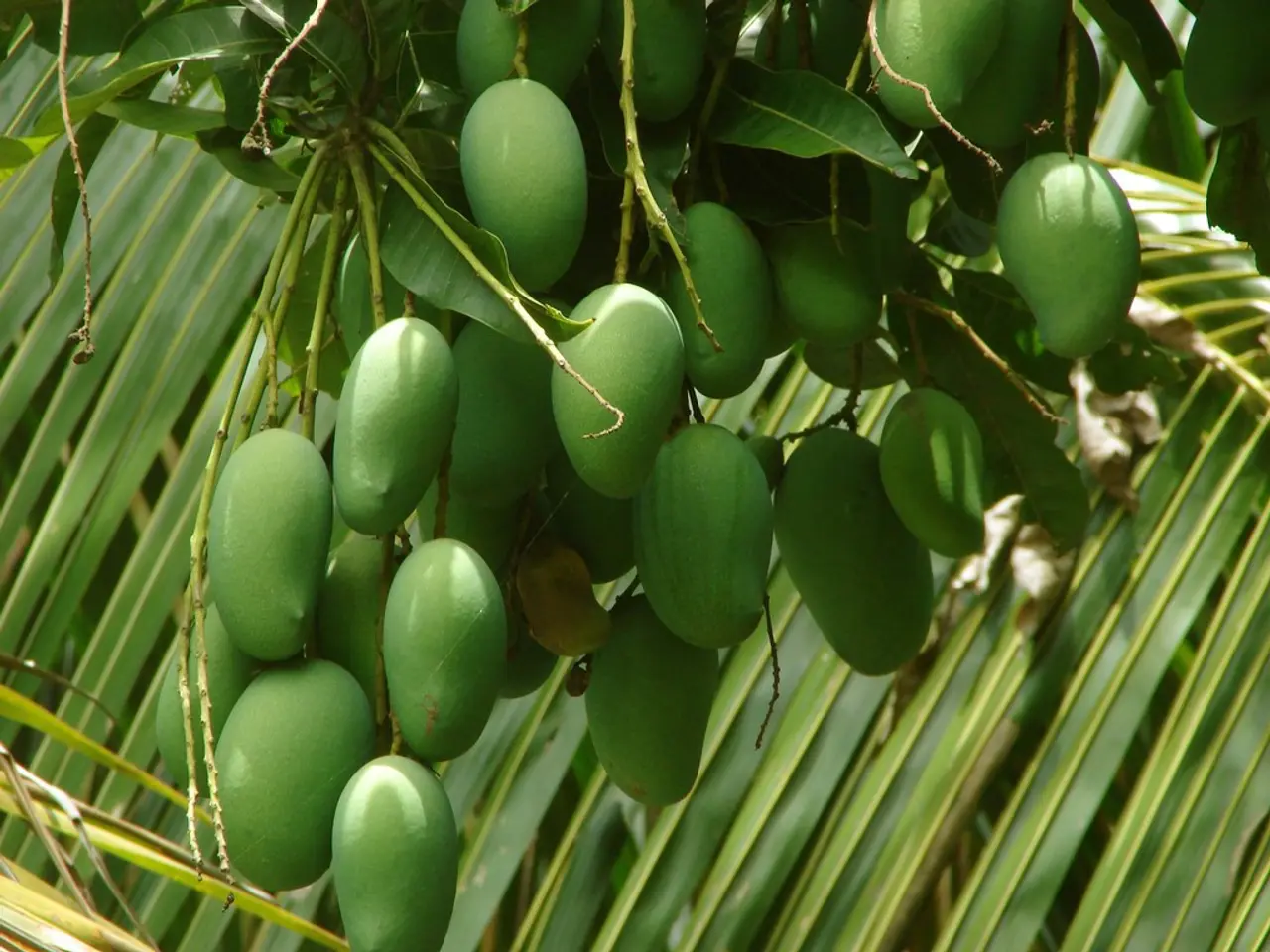Comprehensive Walkthrough of Mango Cultivation for Novice Farmers in India
Starting a profitable mango farm in India requires careful planning and the implementation of best practices. Here's a comprehensive guide to help you get started.
Land Selection
Choosing the right land for your mango farm is essential for growing healthy trees and producing a large amount of fruit. Look for regions with a suitable climate for mango cultivation, such as warm temperatures and well-spread rainfall. Mango trees thrive in well-drained, fertile soils with a pH between 5.5 and 7.5[1]. Additionally, ensure the land is accessible for machinery and labor, facilitating efficient farming and transportation.
Variety Choice
Diversifying the types of mangoes you grow is key to catering to diverse market demands. Popular varieties in India include Alphonso, Totapuri, and local favorites like Kesar, Himsagar, and Langra[2]. Growing a mix of varieties helps spread out the harvest season and reduces reliance on a single variety. Furthermore, opt for mango varieties with built-in resistance to common diseases to improve resilience against pests and reduce chemical use.
Farm Management Strategies
Planting and Density
High-density planting, with trees planted close together, can significantly increase yields. For example, planting trees three feet apart with seven feet between rows can increase yields up to seven times compared to traditional methods[3].
Technology Integration
Integrate technology into your farm management practices to optimize resources and improve efficiency. Utilize tools like drones, IoT sensors, and AI to monitor and manage irrigation, pest control, and nutrient application. Implementing drip irrigation helps conserve water and ensure consistent moisture levels[3].
Sustainable Practices
Adopt sustainable farming practices to maintain soil health and fruit quality. Minimize chemical use by adopting organic or integrated pest management (IPM) practices. Regularly prune trees to maintain shape, promote sunlight penetration, and enhance fruit quality[4].
Market and Economic Strategies
Establish strong market connections to ensure that your produce reaches consumers efficiently and at competitive prices[5]. Consider value-added products, such as mango pulp and juice, to diversify income streams and reduce dependence on fresh fruit sales[5].
By integrating these strategies, mango farmers in India can improve yields, reduce environmental impact, and build a sustainable and economically viable business.
References:
1. [Indian Council of Agricultural Research](https://icar.org.in/) 2. [Department of Horticulture, University of Pune](https://www.unipune.ac.in/horticulture) 3. [International Centre for Tropical Agriculture](https://www.cgiar.org/our-work/centers/ciat/) 4. [National Bureau of Plant Genetic Resources](https://nbpgrindia.org/) 5. [Ministry of Agriculture and Farmers Welfare, Government of India](https://agricoop.gov.in/)
An entrepreneur aiming to establish a profitable mango farm in India must consider farm management strategies such as water management through the implementation of efficient irrigation systems like drip irrigation. water conservation is crucial for sustainable business practices. Additionally, farmers should prioritize finance management by establishing strong market connections and considering value-added products, such as mango pulp and juice, to diversify income streams. By combining these strategies, an entrepreneur can manage their mango farmland efficiently, reduce dependence on fresh fruit sales, and build a profitable and environmentally responsible business.




